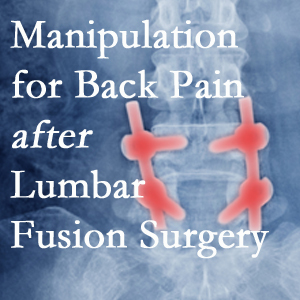July 2020 Healthy News from Rosenberg Wellness Center: Manipulation Effective for Pain after Back Surgery; B Vitamins for Inflammation and Osteoporosis

Spinal fusion surgery. It’s a big surgery, often quite welcome by New York City back pain sufferers wanting pain relief. For paitents whose pain persists despite the back surgery with lumbar fusion, hope still exists with chiropractic care. Two new research papers discussed the apparent choice of distraction manipulation for the resurgent, post-surgical continued back pain following lumbar fusion back surgery. One report reviewed Veterans’ Administration chiropractors who cared for these patients. Many provided healthy lifestyle advice, pain education, exercise, stretching and soft tissue therapy. When it came to manipulation, these chiropractors stated that they incorporated spinal mobilization and flexion distraction manipulation on an “always” or “frequent” basis. 93.5% of patients achieved maximum treatment benefit in 12 or fewer chiropractic treatments. (1) One 42-year-old post-lumbar fusion patient who underwent 12 sessions of spinal manipulation and exercise was asymptomatic, exhibited an 89% improvement in disability, and stable at 3 months. (2) And a third paper recounted that, though diversified manipulation was performed for the majority of back pain conditions, flexion distraction was used notably for treatment of lumbar disc syndrome with radiculopathy and lumbar stenosis. (3) Cox® Technic flexion distraction spinal manipulation continues to be chosen for back pain conditions like post-spinal-fusion-surgery that require a more gentle and effective treatment approach. Rosenberg Wellness Center chooses to utilize it for relief of New York City back pain.
Listen to this PODCAST with chiropractic back pain specialist, Dr. Michael Johnson on The Back Doctors Podcast with Dr. Michael Johnson as he describes two cases of post-surgical back pain patients helped with the Cox® Technic System of Spinal Pain Management.

Numerous issues are at play with osteoporosis and its prevention. Current research points out a significant association among homocysteine, bone mineral density (BMD) and inflammation in women with osteoporosis who are postmenopausal. Low BMD was accompanied by lower levels of B12, vitamin D, bone formation markers, and folate. Higher levels of homocysteine, inflammation, bone resorption markers, and presence of C677T polymorphism were related to low BMD. Homocysteine production is a risk factor for inflammatory disease. It is controlled by methylenetratrahydrofolate reductase (MTHFR) activity with vitamin B12 and folate as causal factors. (4) With this in mind, we can discuss these levels and their adjustment if needed.
CONTACT Rosenberg Wellness Center
Schedule your next New York City chiropractic appointment today with Rosenberg Wellness Center. Whether back pain after lumbar fusion surgery or osteoporosis or inflammation affect you, Rosenberg Wellness Center is your healthcare partner to help!
